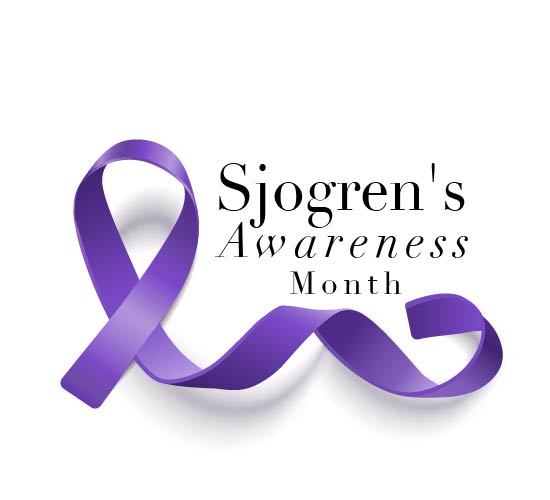Search by Color or Cause


April is Sjogren’s Awareness Month. The Sjogren’s Foundation takes this opportunity to create more awareness about this complex disease. And it highlights patient stories that demonstrate the diversity of this patient population and the range of disease manifestations. This is critical because Sjögren’s is a misunderstood and under-diagnosed disease. Sjögren’s experts project that approximately two million Americans have Sjögren’s and do not know it. Therefore, they are not receiving treatment.
Sjogren’s (“SHOW-grins”) is a systemic autoimmune disease that affects the entire body. Along with symptoms of extensive dryness throughout the body, other serious complications include profound fatigue, chronic pain, major organ involvement, neuropathies, and lymphomas. There are no specific therapies to manage Sjögren’s. The awareness color that represents Sjogren’s is purple or teal. Purple is the primary color.
Approximately half of Sjogren’s patients only have Sjogren’s while the other half has Sjogren’s with the presence of another autoimmune connective tissue disease such as Rheumatoid Arthritis, Lupus, or Scleroderma. Sjogren’s is often misrepresented as a rare disease. However, it is estimated that there are four million Americans living with this disease. This makes it the second most prevalent autoimmune rheumatic disease. As stated above, approximately half of this population is undiagnosed.
Sjogren’s impacts each patient differently. The disease can affect anyone at any age, although nine out of ten patients are female. As Sjogren’s is a systemic disease affecting the entire body, symptoms may remain steady or worsen over time. Because disease manifestations show up differently in patients, there is no universal, recognized progression of Sjogren’s. While some people experience mild discomfort, others may experience a significant physical burden. That burden prevents them from having a reasonable quality of life. Variability in symptoms across the patient population can make it challenging for patients and their physicians to manage the disease.
Sjogren’s patients commonly have five (5) to seven (7) health care providers to guide patients on the management of the disease. And, in addition, the specific manifestations experienced. The physicians that a patient generally sees, in addition to their primary care provider, are optometrists, dentists with experience in Sjogren’s, rheumatologists, otolaryngologists and/or an ENT provider, nephrologists, pulmonologists, gastroenterologists, cardiologists, and neurologists. In some cases, lifestyle changes can help certain symptoms such as fatigue, pain, and gastrointestinal reflux. In most cases, a disease management plan includes prescription medications, over-the-counter products, and lifestyle suggestions. Because of the number of physician visits, medications, and over-the-counter products needed to live comfortably and slow potential progression, Sjögren’s is a very expensive disease for patients.
What we know about Sjogren’s will soon change. And it will change for the better! We look forward to the ongoing work of clinicians, researchers, and industry to change Sjogren’s is diagnosed and treated. Together we can conquer the complexities of Sjögren’s and improve the quality of life for all Sjogren’s patients.